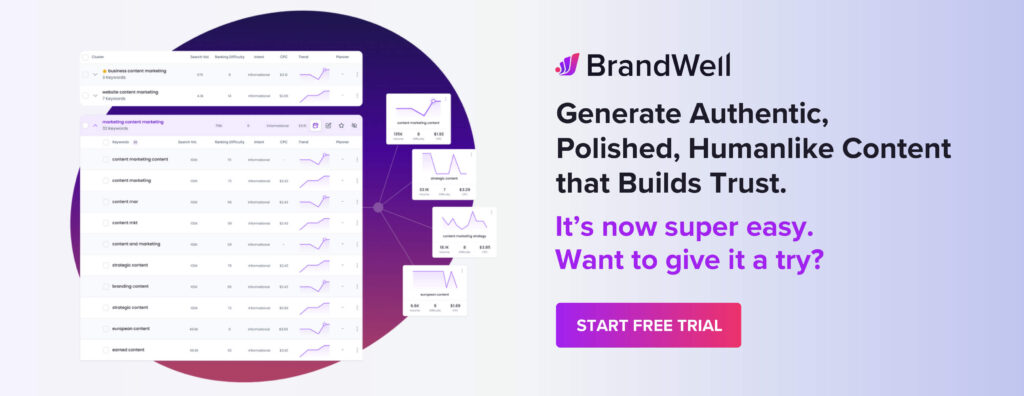Discover top guides, trends, tips and expertise from AIO Writers
How to Find Keyword Gaps in Your Content Strategy
Julia McCoy
Sunday, 16th Jun 2024
Ever wondered why your competitors always seem to outrank you on Google? It might be because they’re capitalizing on keyword gaps that you’re missing out on.
Finding keyword gaps is all about discovering those valuable keywords that your competitors are ranking for, but you’re not. This can open up new opportunities for you to drive more traffic to your site and boost your SEO game.
Ready to uncover these hidden gems? Let’s dive into how to find keyword gaps and outshine the competition!
Table Of Contents:
- What is a Keyword Gap Analysis?
- How to Find Keyword Gaps
- Best Practices for Keyword Gap Analysis
- FAQs: How to Find Keyword Gap
- Conclusion
What is a Keyword Gap Analysis?
Keyword gap analysis is a technique used in SEO to discover valuable keywords that your competitors rank well for, but your site doesn’t.
If you’re serious about SEO, keyword gap analysis is a must. It helps you stay ahead of the competition by revealing untapped keyword opportunities. You can gain insights into your competitors’ keyword strategies and discover content ideas based on the keywords you’re not currently targeting.
Plus, it allows you to optimize your existing content to rank for additional relevant keywords. By continuously analyzing and adapting your keyword targeting, you’ll be able to capture more organic traffic and improve your search engine rankings.
You’ll gain a deeper understanding of your competitors’ content strategies and uncover gaps in your own. This allows you to create targeted content that not only fills those gaps but also provides immense value to your audience. And when you’re giving your readers what they want, the traffic and conversions will follow.
Here’s a quick summary of how to conduct a keyword analysis:
- Identify your competitors: This involves figuring out other websites that target a similar audience and offer similar products or services.
- Research keywords: Find keywords that are relevant to your niche and have a decent search volume.
- Compare your keywords with your competitors’: Keyword gap analysis tools can help you see which keywords your competitors rank for. By comparing these lists, you’ll find those missing keyword ideas.
- Analyze the gap: Prioritize keywords that are relevant to your business and have a good chance of ranking.
In the following sections, I’ll break down each of these steps and show you exactly how you can get ahead of the competition by learning how to find keyword gaps.
Example of a keyword gap analysis from Similarweb
How to Find Keyword Gaps
Ready to dig into your competitors’ keyword strategy? Here’s a four-step method for conducting a keyword gap analysis.
Step 1: Identify Competitors
To perform a keyword gap analysis, you need to know who you’re up against. Start by making a list of your top 5-10 organic search competitors. These are websites that consistently rank well for keywords related to your business or industry.
If you’re not sure who your competitors are, do a quick Google search for your main target keywords and see which websites show up on the first page of results. Chances are, those are the ones you’ll want to analyze.
Here’s an example of top competitors of a UK solar business:
Step 2: Identify Target Keywords
Once you have your list of competitors, it’s time to uncover the keywords they’re ranking for that you’re not.
Use a keyword gap tool like Semrush, Ahrefs, or Moz to compare your website’s keyword profile against theirs.
These tools will show you the overlapping keywords you both rank for as well as keywords that you are missing out on.
Pay close attention to keywords with high search volume and relevance to your business. These are the ones you’ll want to focus on targeting in your content strategy.
Step 3: Label the Keywords
After identifying the keyword gaps, it’s important to categorize and prioritize them. Label them as high, medium, or low priority based on factors like search volume, keyword difficulty, and relevance to your business.
High-priority keywords are the ones with significant search volume that are highly relevant to your core products or services. These are the ones you’ll want to tackle first in your content creation efforts.
Step 4: Rinse and Repeat
Keyword gap analysis is not a one-and-done task. As you create new content targeting the identified keyword gaps, your competitors will also be evolving their strategies. It’s important to regularly perform keyword gap analysis every few months to continuously discover new opportunities and stay ahead of the competition.
Use the insights gained from each analysis to inform and adapt your content plan. By consistently filling those keyword gaps, you’ll be able to climb the search engine rankings and drive more organic traffic to your site.
Best Practices for Keyword Gap Analysis
Competitor keywords are a goldmine of opportunities. By identifying the keywords your competitors are ranking for, you can gain valuable insights into their content strategies and find gaps in your own.
But it’s not just about copying what they’re doing. It’s about using that information to create even better content that outshines theirs.
Here are some tips on how to use competitor keywords to your advantage:
Group Similar Keywords
Once you’ve identified the competitor keywords you’re not ranking for, group them into themes or topics. This will help you create comprehensive content pieces that can rank for multiple related keywords.
For example, if you find several long-tail keywords related to a specific product feature, consider creating an in-depth guide or tutorial that covers all aspects of that feature.
By grouping keywords thematically, you can create content that is more valuable and informative for your audience.
Analyze the Monthly Search Volume
When evaluating your keyword list, search volume is a key metric to consider. Generally, keywords with higher search volume represent bigger opportunities. But don’t just go after the highest volume keywords. Make sure they’re also relevant to your business and target audience.
A highly relevant keyword with a lower search volume may be more valuable than an irrelevant one with a high search volume. It’s all about finding that sweet spot where relevance and search demand intersect.
Take Note of Search Intent
Search intent refers to the reason behind a user’s search query. It could be informational, navigational, commercial, or transactional. Understanding search intent is crucial for creating content that aligns with what users are looking for.
When analyzing keyword gaps, take note of the search intent behind each keyword. This will help guide your content creation efforts and ensure you’re providing value to your target audience.
Examine the Keyword Difficulty
Keyword difficulty is a metric that estimates how hard it would be to rank on the first page of search results for a particular keyword. Many keyword research tools like Content at Scale provide a keyword difficulty score.
When prioritizing your keyword gaps, aim for a balance of high search volume and reasonable keyword difficulty. Extremely difficult keywords may not be worth the effort, especially if you’re just starting out.
Research Competitive Density
Competitive density refers to the number and strength of websites currently ranking for a keyword. Even if a keyword has high search volume and relevance, an extremely competitive landscape may make it harder to rank.
Tools like Ahrefs show a “traffic potential” metric that estimates the total search traffic you could gain by ranking in the top 10 positions. Use this data to inform your keyword targeting decisions.
Find Out More About CPC
While keyword gap analysis primarily focuses on organic search, analyzing the cost-per-click (CPC) of keywords can provide additional insights.
A high CPC indicates that advertisers are willing to pay more for a click, suggesting commercial value.
If you find keyword gaps with high CPC, it may indicate an opportunity to target those keywords with both organic content and paid search ads.
By combining your SEO and PPC efforts, you can dominate the search results and drive more targeted traffic to your site.
Be a Better Version of Your Competitor(s)
When creating content to target competitor keywords, your goal should be to create the best piece of content on that topic. Don’t just settle for being as good as your competitors. Aim to be better.
Analyze the top-ranking pages for your target keyword and identify ways to make your content more valuable, informative, and engaging. This could involve providing more in-depth information, including unique data or examples, enhancing the user experience, or offering a fresh perspective.
Monitor Your Progress (Ranking)
After publishing content optimized for the keyword gaps, it’s crucial to monitor your search rankings to track your progress.
Use tools like Google Search Console or rank tracking software to see if your new content is starting to rank for the target keywords.
Keep an eye on your organic traffic and engagement metrics to assess the impact of your keyword gap strategy.
Regularly revisit your keyword analysis to identify new opportunities and refine your approach based on your results.
FAQs: How to Find Keyword Gap
How do you identify content gaps?
To identify content gaps, start by analyzing your existing content and that of your competitors. Look for topics or keywords that your competitors are covering extensively but you haven’t addressed yet.
Use SEO tools like Google Search Console to compare keyword rankings and content coverage between your site and your competitors.
Pay attention to common themes and questions in your industry that haven’t been adequately addressed on your site. Identifying these gaps allows you to create targeted content that fills the void, attracts more organic traffic, and improves your overall content strategy.
How to fix a keyword gap?
Analyze your competitors’ content, identify the gaps, and create high-quality content that targets those missing keywords.
Ensure your content is optimized for SEO, making it easily discoverable by search engines. This will help you outrank your competitors and dominate the search engine results pages (SERPs).
Conclusion
Finding keyword gaps is a powerful SEO strategy. By identifying untapped opportunities and analyzing your competitors’ keyword strategies, you can gain a significant advantage in your industry.
Whether you’re a small business owner, a marketing professional, or a content creator, learning how to find keyword gaps can help you outshine your competitors in SERPs.

UNLOCK YOUR POTENTIAL
Long Headline that highlights Value Proposition of Lead Magnet
Grab a front row seat to our video masterclasses, interviews, case studies, tutorials, and guides.



